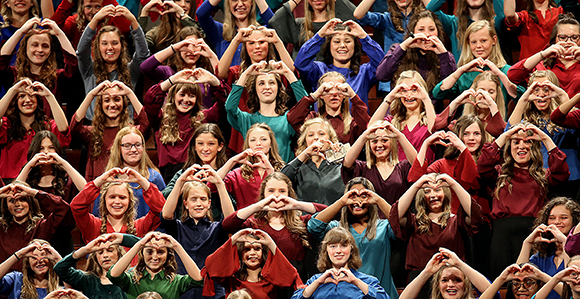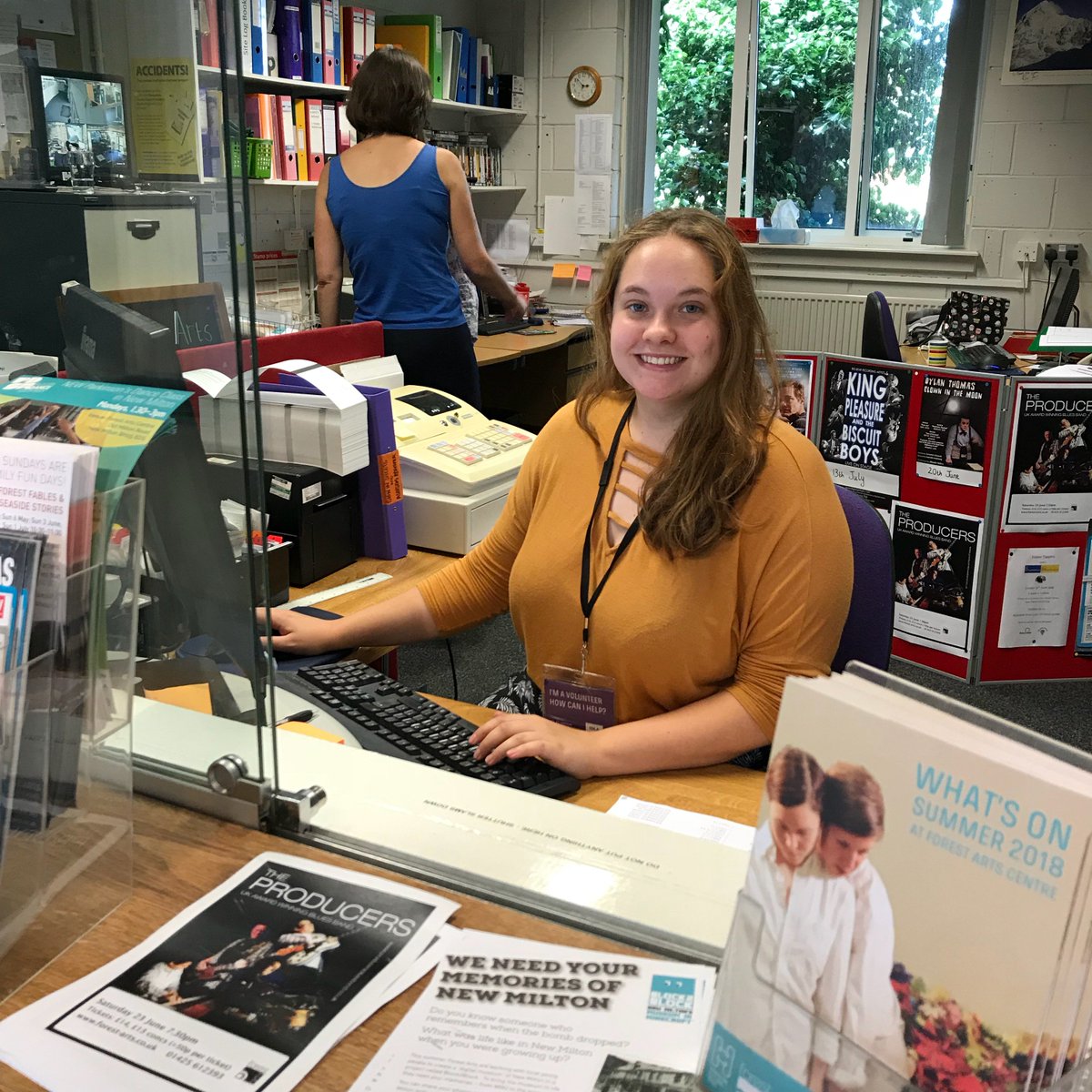Ticketsolve Insights: Who is Really Buying Tickets to Arts Events?

Global studies indicate that by 2028, women are expected to control a full three-quarters of the world’s discretionary spending. You can see this rise happening across industries from financial to retail, women’s purchasing power has been surging ahead.
And within our own arts and culture sector, we’ve seen some surprising trends emerge. We’ll look at these buying trends and how best to attract these purchasers.
In Part I we cover buyer behaviour and in Part II we'll take you through how to tap into this powerful audience.
Studying Buyer Behaviour
Understanding what drives behaviour helps you to better understand your customer
Research into buyer behaviour and trends is nothing new. Even before the literal book on buying behaviour was written in 1968, organisations have been looking at what influences and drives our purchase decisions.
These studies are most notable in their focus on sex difference and buying behaviour: what drives women and what drives men to buy what they buy (in our review of published research “men” and “women” were defined by traditional gender definitions. In our own study, gender definitions of “men” and “women” were self-reported).
Two things to keep in mind:
-
All of these studies are very general and broad sweeping - there are of course exceptions.
-
Trends change quickly, what is true now, may not be true in a year or even six months.

Women vs Men: A Traditional View
Do women just want to find stuff and do men just want to conquer stuff?
When you think of shopping, who do you imagine is doing the shopping? Did you picture a woman? You’re not alone if you did. While that is perhaps a stereotype, research suggests that, globally women are “bigger shoppers” than men. You might even hear that women are “natural” shoppers or it is in their “DNA”. The idea being that women “gather” (find stuff) and men “hunt” (conquer stuff), therefore the job of shopping falls naturally to women - wandering around a store and wandering around a jungle?
Whether you buy into this evolutionary explanation of shopping habits, the impact of the modern shopping experience might explain some behaviour a bit better. Early on, shops were not places to go have a wander, you went in ordered what you needed and left. The advent of the modern shops, gave women the freedom to get out of the house and choose - in an era when they had no choice (and often were not really even free to leave the house). Even today, women often describe shopping as liberating, “getting what I want.” Maybe it is that feeling of freedom and choice that is still attractive: a survey of 2,000 British people conducted in 2013 found that men become bored after only 26 minutes of shopping, while it took women a full two hours. The survey found that 80 percent of men didn't like shopping with their partners, and that 45 percent avoided doing so at all costs. Almost half of all spousal shopping trips ended in arguments, with men becoming frustrated, because they bought what they needed straight away, while their partners were still looking and taking too long to make decisions.

Women vs Men: An Online View
The internet is changing everyone’s behaviour
Since the mid 90’s (Amazon and Ebay started in 1995 if you can believe it), buyers have been slowly moving online. A study from the Office of National Statistics has shown that now a full 1 in 5 pounds in being spent online. With 51% of UK consumers saying they prefer to shop online. And in Ireland? 2.1 million people shopped online (with an Irish based company) in 2018.
This is all to say that online shopping is a massive area and different than bricks and mortar buying. So what happens to women and men’s purchasing habits online? Traditionally, men have dominated (and prefered) online buying. Part of this is likely due to the transactional nature of online shopping (research, find and buy), versus bricks and mortar buying environments which tend to be more interactive (something that women prefer). Men have even shown a desire to never leave the house preferring to buy online.
And while in certain categories, men are still the primary purchasers, increasingly, women have gained ground in driving online transactions. In 2016, in the UK for example, 65% of female internet users shopped online, compared with 67% of males, and we can point to a few possible reasons why women are quickly closing the online buying gap:
-
Digital everything: The internet is absolutely everywhere, this means, that for some products, you simply have to go online to purchase. Some shops in fact only offer certain products as “online only”.
-
Being online all the time: Many psychologists believe that the online nature of our modern world has impacted our behaviour. So much so, that we have been “trained” to buy online.
-
Seeing offers: Studies have shown that men are less likely to see offers as compared to women. Online offers abound and are much easier to search out, likely driving women online.
-
Social proofing: both men and women require social proofing, but women are far more influenced by this than men. Online shopping allows for more social proofing than brick and mortar stores.
With this general overview in mind, let’s take a closer look at what is going in the arts and culture sector.

Who Is Really Buying in the Arts?
With all this focus on buyer behaviour, we were curious how this translated to ticket purchasing. We have often talked about data and segmenting your audiences in order to understand and engage them and drive loyalty. But who exactly hits that “buy now” button?
To study the purchasing pattern of our audience members we need to focus on one specific subgroup amongst our audiences - ‘The Ticket Purchasers’.
Using aggregate data from Ticketsolve customers across the UK and Ireland, we looked at what constitutes ‘The Arts Ticket Purchasers’, who they are, where they purchase from, and what motivates them to purchase.
Segmenting the Audience: Arts Tickets Purchasers
Traffic is not the same as a purchase
Let’s start by taking a look at defining this segment of our audience and how we can identify them. Purchasers are the audience members who complete the physical booking journey on your website. This is a different group than “researchers” or “cart abandoners”.
One interesting point to note here are “researchers” and the information you may not be seeing. Take a look at this example, from Nina Angelovska’s Forbes article from 2018,
“ . . .digging deeper whenever we can afford to do so is always a good idea. For instance, in my company, profiling buyer personas of different product categories showed that men buy more travel and holiday packages than women, which is in line with the Eurostat data depicted above. However, after diving a bit deeper, we were surprised to find out that very often women search for travel holidays, pick the travel deal and send the link to their husband who then completes the transaction.”
This “researcher” is still a part of your customer journey, and something to consider as you analyse your data.

At the moment, we are interested in purchasers - your customers who have taken the full online booking journey. The key here is to understand who they are and what drives them to purchase.
In looking at the Ticketsolve data, the first standout discovery, is the weighting between female and male audience members (for the purposes of our study, genders were self-identified). Now that is probably no great surprise that a majority of audience members within the arts are women (previous research has shown that women make up 60%-70% of theatre audiences (see here and here), but more striking was the weighting within actual purchasers.
Look at our aggregrate research we discovered that up 80% of online ticketing purchases are attributed to female buyers. Broader research of the UK theatre market supports this result showing women buy 70% of all theater tickets sold. But that is not quite the end of the story.

What Does that 80% Really Mean?
80% of women are doing the purchasing, but for whom?
Because 80% of customers who purchase tickets are women does not mean that 80% of audiences members are women. The percentage of female/male audience members is dependant on demographics, interests, programming etc. All we can be certain of - at least from what our research shows - is that 80% of the customers who land on our site and book tickets identify as women. They could be booking tickets for themselves, family members, friends, spouses, or children but ultimately it is women who are doing the majority of the booking and the buying.
So from a quantitative perspective, we have a powerful piece of information: 80% of ticket buyers are women. The next step was to see how this translates to qualitative data; what does the box office think of this?

Data is Powerful, But What are People Really Saying?
Qualitative data can add to your understanding of the pure data.
Part of understanding data is not just looking at the numbers. The numbers should act as a guide to your thinking, but talking with people gives you the richness behind the numbers. We wanted to find out exactly what this data really meant for our customers.
Over the course of a number of weeks, our Manchester and Dublin teams spoke to customers as often as possible, asking one simple question: “Who buys the tickets in your household?”
What we heard was, “my sister (or wife, girlfriend, mother, mother-in-law, etc.) always buys the family tickets for the Christmas panto for all the grandchildren. We also heard, “my brother will always surprise me with concert tickets for my birthday”.
What became evident is that the drivers were different. For men, purchasing has a clear purpose. While women purchasers tended towards browsing online for the perfect events, concerts, and performances - for lots of people. The difference was they take their time and book further out. In fact, surveys have shown that women were 30% more likely than males to book tickets 3 months or more in advance. Though both sexes tend to buy tickets for performances and cultural events further out. 29% of tickets sold on the day or the day before; 30% 1-4 weeks away; 21% 1-3 months out; and 27% of tickets were purchased 3 months or more in advance.
We hope that has given you a bit of background into buyer behaviour and how to generally begin to think about women purchasers.
In Part II, we'll look at how your data-driven, persona-based marketing can really attract women purchasers.
Stay tuned for next week!
Categories
Recent posts
Archive
- December 2025 (2)
- November 2025 (1)
- October 2025 (3)
- September 2025 (1)
- August 2025 (3)
- July 2025 (3)
- June 2025 (3)
- May 2025 (4)
- April 2025 (5)
- March 2025 (5)
- February 2025 (4)
- January 2025 (4)
- December 2024 (3)
- November 2024 (5)
- October 2024 (4)
- September 2024 (7)
- August 2024 (5)
- July 2024 (3)
- June 2024 (3)
- May 2024 (3)
- April 2024 (3)
- March 2024 (4)
- February 2024 (5)
- January 2024 (3)
- December 2023 (3)
- November 2023 (4)
- October 2023 (4)
- September 2023 (5)
- August 2023 (3)
- July 2023 (4)
- June 2023 (4)
- May 2023 (5)
- April 2023 (4)
- March 2023 (4)
- February 2023 (5)
- January 2023 (4)
- December 2022 (4)
- November 2022 (3)
- October 2022 (4)
- September 2022 (5)
- August 2022 (2)
- July 2022 (4)
- June 2022 (5)
- May 2022 (4)
- April 2022 (5)
- March 2022 (3)
- February 2022 (4)
- January 2022 (4)
- December 2021 (2)
- November 2021 (3)
- October 2021 (5)
- September 2021 (4)
- August 2021 (4)
- July 2021 (3)
- June 2021 (4)
- May 2021 (2)
- April 2021 (4)
- March 2021 (5)
- February 2021 (4)
- January 2021 (5)
- December 2020 (4)
- November 2020 (4)
- October 2020 (5)
- September 2020 (5)
- August 2020 (4)
- July 2020 (7)
- June 2020 (5)
- May 2020 (5)
- April 2020 (5)
- March 2020 (8)
- February 2020 (4)
- January 2020 (5)
- December 2019 (3)
- November 2019 (5)
- October 2019 (4)
- September 2019 (4)
- August 2019 (5)
- July 2019 (4)
- June 2019 (4)
- May 2019 (5)
- April 2019 (4)
- March 2019 (4)
- February 2019 (3)
- January 2019 (5)
- December 2018 (4)
- November 2018 (8)
- October 2018 (2)
- September 2018 (3)
- August 2018 (5)
- July 2018 (4)
- June 2018 (4)
- May 2018 (1)
- April 2018 (1)
- March 2018 (3)
- February 2018 (2)
- December 2017 (2)
- November 2017 (3)
- October 2017 (4)
- September 2017 (2)
- August 2017 (1)
- July 2017 (5)
- June 2017 (3)
- May 2017 (2)
- April 2017 (3)
- March 2017 (2)
- February 2017 (3)
- January 2017 (3)
- December 2016 (4)
- November 2016 (1)
- September 2016 (1)
- July 2016 (3)
- June 2016 (1)
- May 2016 (2)
- April 2016 (2)
- February 2016 (1)
- January 2016 (3)
- December 2015 (2)
- September 2015 (1)
- August 2015 (2)
- July 2015 (1)
- June 2015 (2)
- May 2015 (2)
- April 2015 (5)
- March 2015 (2)
- February 2015 (2)
- January 2015 (4)
- December 2014 (3)
- November 2014 (3)
- October 2014 (2)
- September 2014 (3)
- August 2014 (3)
- July 2014 (3)
- June 2014 (7)
- May 2014 (6)
- April 2014 (3)
- March 2014 (2)
- February 2014 (1)
- January 2014 (3)
- December 2013 (1)
- August 2013 (1)
- June 2013 (1)
- April 2013 (1)
Sign up for regular updates


